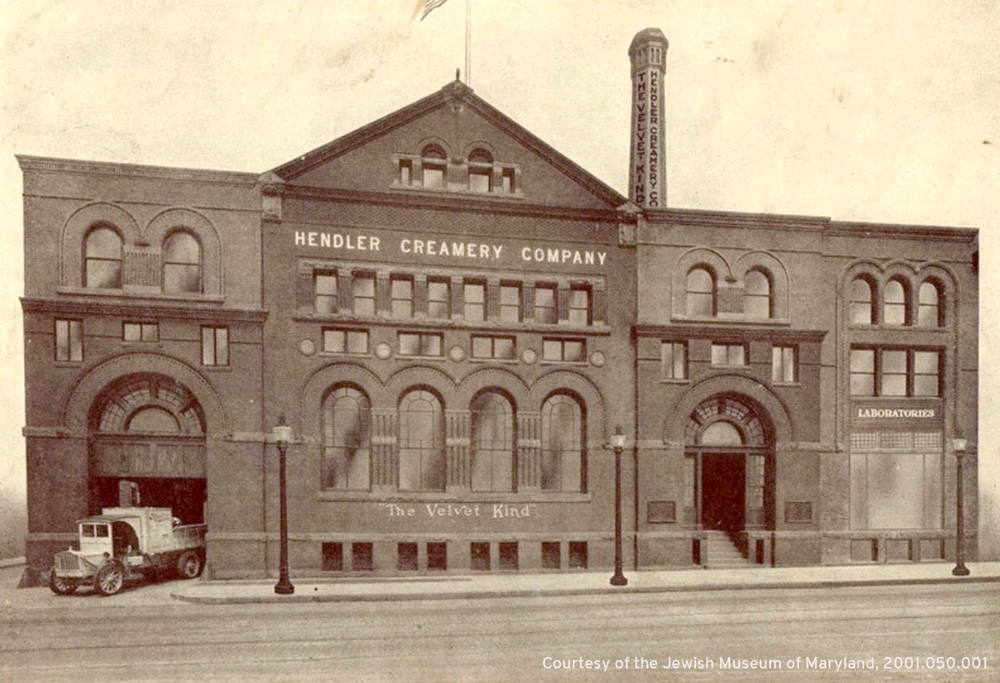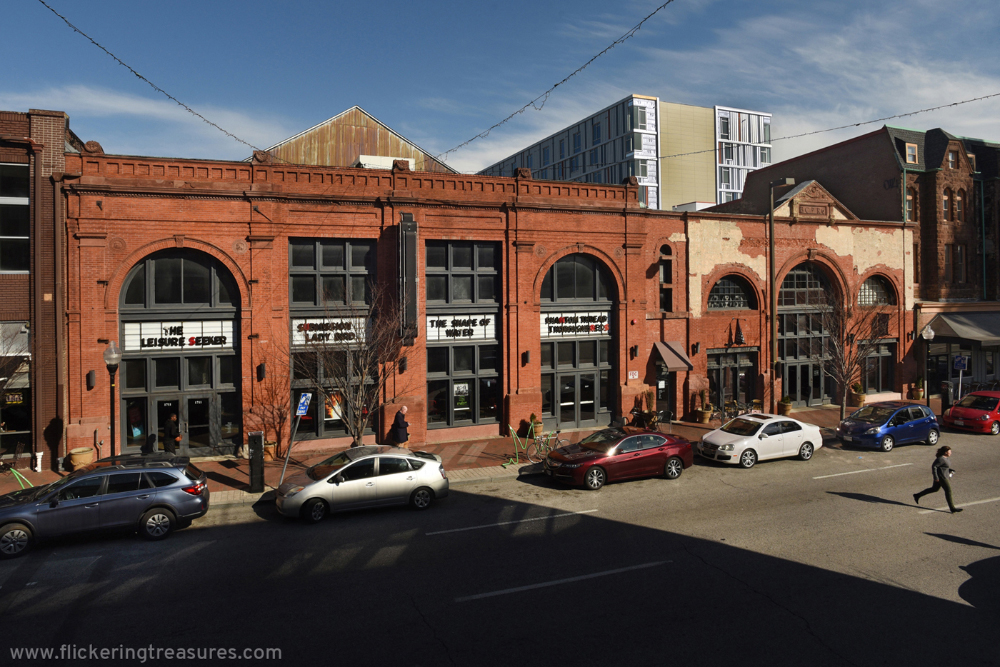Bijou
1100 East Baltimore Street

The redevelopment plans for the old Hendler Creamery site at 1100 East Baltimore Street reminds me of the building’s brief stint as an early venue for moving pictures. Architect Jackson C. Gott designed this striking building, and the Charles Theater’s similar structure, as powerhouses for cable cars in 1892. Fortunately, both handsome Romanesque Revival buildings are wonderful examples of adaptive reuse. (The architectural history of the Charles, which was transformed into the Times newsreel theater in 1939, is celebrated in Flickering Treasures.)

After the technology for propelling street cars evolved from underground cables to electric power around 1898, the Baltimore Street building was repurposed. In 1903 a family vaudeville theater called Convention Hall opened in this cavernous space. According to theater historian Robert K. Headley, short Vitagraph films were shown here as early as 1903. It briefly operated as the Bijou later in 1903, and then again in 1906. For some months in 1907, the renamed Baltimore Theater catered to Jewish immigrant audiences in the Jonestown neighborhood. New management turned to opera and called it the Princess Theater. The 2,000-seat theater re-emerged as the Bijou movie house in 1908-1909. For the next few years, the Bijou was used as a Yiddish theater.

The transition from theater to manufacturing took place in 1912, with the establishment of the Hendler Creamery plant, whose slogan was “The Velvet Kind” of ice cream. Hendler’s, the largest of the many ice cream manufacturers that sprang up in Baltimore by 1915, was one of the earliest in the country to package ice cream to sell in grocery stores. Is it a coincidence that the craze for commercial ice cream accelerated at the same time as the excitement for nickelodeons?

Now the Hendler Creamery building is being converted to a $75 million mixed-used development, with 296 apartments. Demolition has begun on secondary buildings on the site. Let’s hope that the new development will honor not just Hendler Creamery, but the building’s early cable car and theater legacies.
Hendler Creamery photo is courtesy of the Jewish Museum of Maryland, 2001.050.001